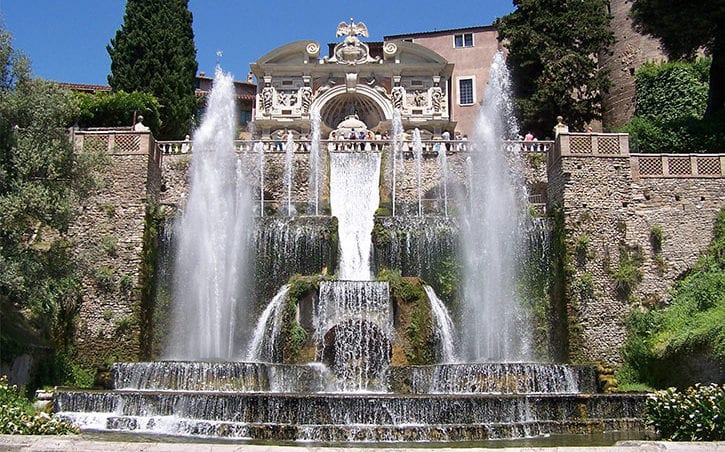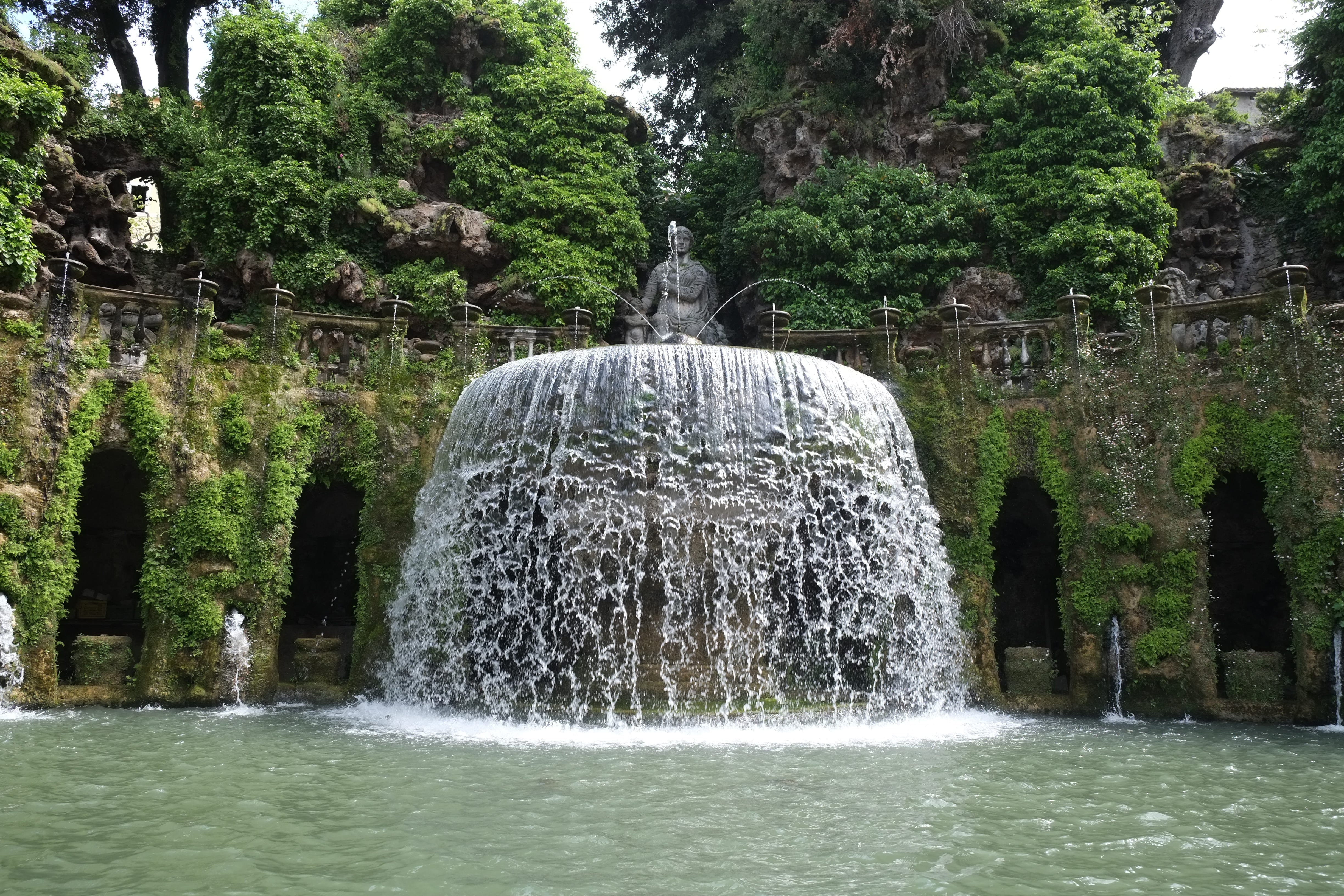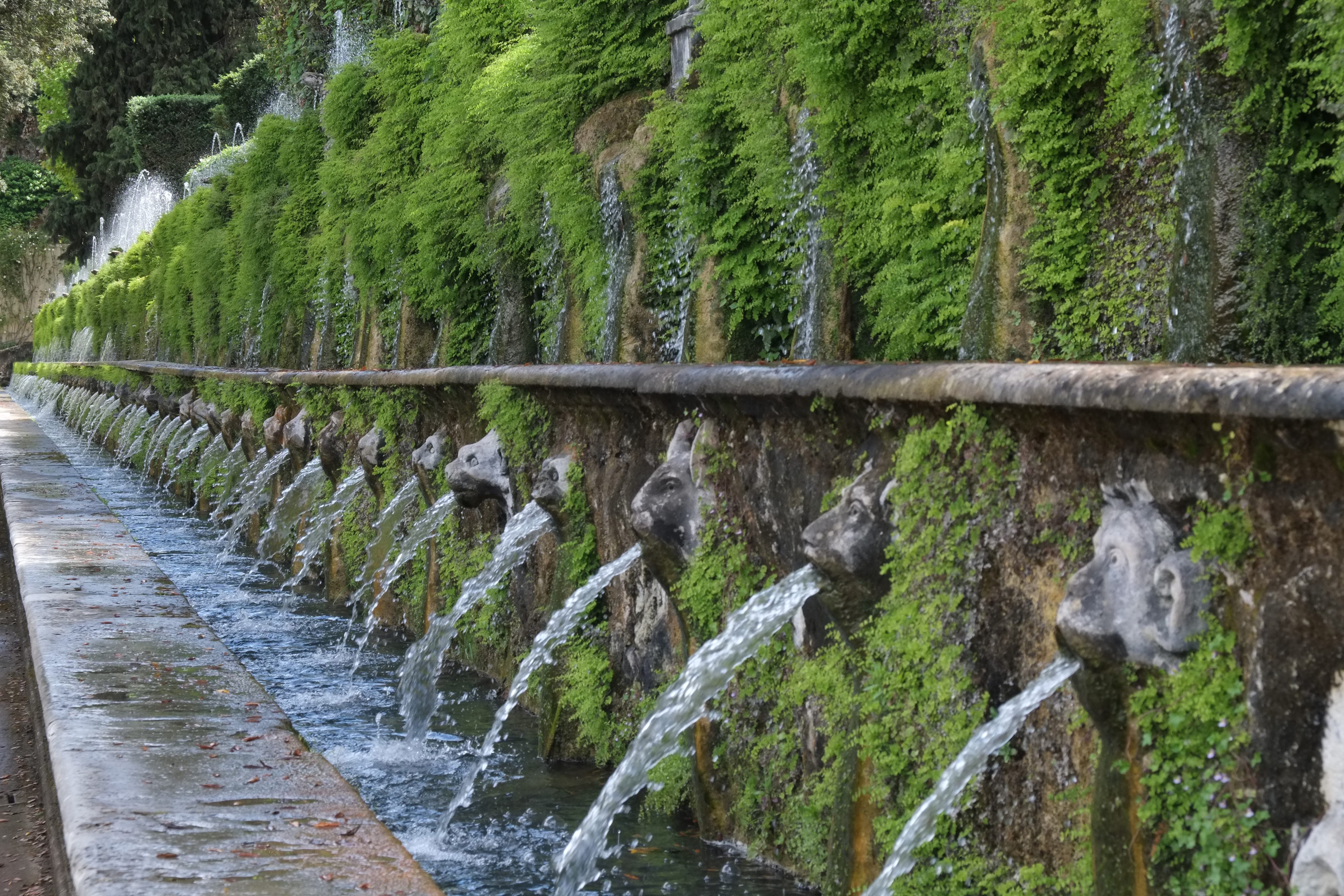The Wisdom of History: Italy’s Villa D’Este Is Rich With Design Inspiration
Posted in News -

By: Chris Roy, Director of Creative Design, OTL, Inc.
With its multitude of water features – including a four-hundred-year-old musical fountain – the Villa d’Este has much to offer in the way of inspiration for designers.
The Villa d’Este is a superb villa situated in Tivoli, just outside Rome. Best known for its gardens and water features, the UNESCO World Heritage Site was commissioned by Ippolito d’Este II, Cardinal of Ferrara, and built out from the early 1550s through the 1600s.
Construction hastened in the latter years of the Cardinal’s life and the project was readied for a visit by the pope in 1572 also the year of the Cardinal’s death. Completion of the project was delayed by construction and maintenance costs, as well as by changes in ownership after the passing of the Cardinal.
“
The villa, gardens, and water features were designed by Cardinal Ippolito II along with architect and artist Pirro Ligorio; the gardens were constructed by Alberto Galvani and an army of artisans (through a process we would recognize today as design/build.)
” Chris Roy, Director of Creative Design for OTL.
Improvements and restorations were made to the gardens and fountains throughout the ensuing years, including notable renovations involving famed fountain designer Gianlorenzo Bernini between 1660 and 1670.
The villa and gardens should be on the “to-visit” list of anyone with an interest in architecture or landscape architecture visiting Rome. The fountains, in particular, are worthy of close attention. While the inspiration for historically-influenced fountain design is obvious, the fountains embrace a number of basic design principals and water characters that are relevant for designers creating even the most modern water features.
Each of these fountains is all gravity-fed, the site having been massively excavated and reshaped to allow the water features that were envisioned to make maximum use of the elevation changes and hydrology. Initially supplied by a small canal, the growing number and increasing scale of the water features required a dedicated 600m tunnel to be dug beneath the town of Tivoli, tapping directly into the Anio river.
One of the reasons the water features are so impactful is their scale; they are big! They’re well-suited to the proportions garden and expansive vistas beyond, and, importantly, the basins are large enough to allow for several important water characteristics seen in the fountains.

The basins, with their dark bottoms, function excellently as reflecting pools, enhancing views of the landscape and villa. Many of the basins span full-width between large retaining walls. These aren’t mere “fountains” that are added to spaces as decorative elements; these water features define the spaces, visually anchoring the massive earthwork walls beyond.
The large pools catch splash from the great jets of the Fountain of Neptune and the iconic cascade at the Oval Fountain. As modern-day fountain designers, splash radius is one of the most prominent limitations we face on a regular basis. With real estate at a premium, we see the situation arise time and again where owners and/or designers want to minimize the fountain’s footprint while also wanting to use high jets to maximize visual impact from a distance.
One of the space-saving tricks used at the Villa d’Este is the placement of vertical jets in the Fountain of Neptune. They are pushed to the back of the fountain, close to the retaining walls. This leaves plenty of open water in front of the jets to catch splash and spray, while the walls behind the geysers also catch the spray and guide it back down into the basin. Filled with biologically living water, the eternally-wet fountain walls have allowed the garden to advance across the vertical surfaces, covering them with an assortment of mosses and ferns.
In a modern iteration of this arrangement, we might design the backdrop walls for the fountain as large water walls, which would avoid staining and mineral buildup that could otherwise be encountered with an uncontrolled wet/dry condition.
The other important factor behind the scale of the ponds is their reflective properties. Waterfalls, cascades, and fountain jets create a lot of splash and water action. In a small fountain, the surface will always be choppy; in some instances, fountain designers have to create special details or specify fabricated baffle plates to prevent this wave action from negatively affecting the water display created by water-level-dependent nozzles.
Using large basins, when space allows, gives room for the water to calm and reflected views of the fountain and surroundings to come into focus. Creating separate basins, like the Fish Ponds at the Villa d’Este, enhances the effect, as waves do not propagate through the hydraulic connections between basins. Another detail that we have seen in more modern water features is physical separation of the foreground basin from the foot of a cascade by allowing both to flow into a shared trough. This infinity edge calms the water on the foreground basin, allowing picture-perfect reflections of the cascades and fountain jets beyond.

Speaking of cascades, this is one of the other areas where the Villa d’Este fountains truly excel. From the chadar feeding into the Fountain of Neptune to the weir on the bowl in the Oval Fountain, the designers nailed the details four hundred years ago that are still very relevant to projects today.
Just as dark surfaces enhance the reflective qualities of the water in the basins, the dark finish on the chadar (a sloped, textured water ramp originating in India) contrasts brilliantly with the fast-flowing white water. Had a light-colored stone finish been used for this feature, the water effect would be nearly invisible from normal viewing distances.
The fountains’ weirs are also designed to maximize visual impact. Most fountain bowls today seem to be constructed with smooth radiused weirs – a strategy that doesn’t typically show the water off to its best advantage. Water flowing over a smooth weir often inflects, or pulls inward as it falls, and typical smooth weirs create a “laminar sheet” of water which falls a certain distance (determined by the amount of flow over the weir and the smoothness or texture of the weir) before it begins to flutter. This can create an irritating noise and contribute to excessive splashing.

At the Villa d’Este, the weirs are crenulated; the crests of the weirs are subdivided and carved with a series of depressions, which break the water flow into a series of regularly-spaced streams instead of a continuous sheet. The profiles of the weirs are also cut to ensure an ebullient, outward-flowing water display. The flowing water breaks into streams then droplets, cascading into the basins below in a much more predictable and refined way than a simple, smooth weir would allow.
The Villa d’Este is a relaxing and refreshing destination, offering beautiful gardens, historic structures, and amazing views for all who visit. This is one of Italy’s greatest treasures that fortunately, been well-preserved and will continue offering inspiration for generations to come.
 Chris Roy is the Director of Creative Design for Outside the Lines, Inc. In this role, he leads the company’s design efforts, working with developers, architects, and landscape architects, as well as engineers and vendors. Contact him at ChrisR@otl-inc.com.
Chris Roy is the Director of Creative Design for Outside the Lines, Inc. In this role, he leads the company’s design efforts, working with developers, architects, and landscape architects, as well as engineers and vendors. Contact him at ChrisR@otl-inc.com.
Featured Articles
- Leading With Heart: Why Giving Back Is Good Business
- Hot Spots: 3 U.S. Markets Redefining Retail & Entertainment Development
- Bringing Out the Best: Leadership That Elevates
- From Spas to Speakeasies: Amenities Defining Today’s Private Estates
- Getting to Know Devin Schumacher, Director of Field Operations